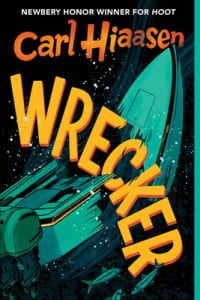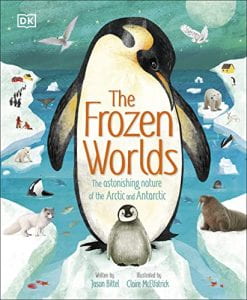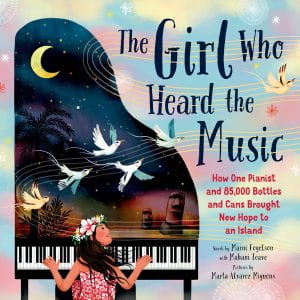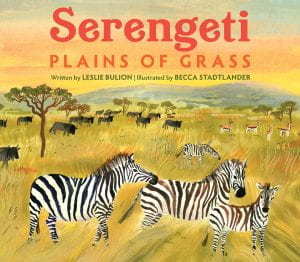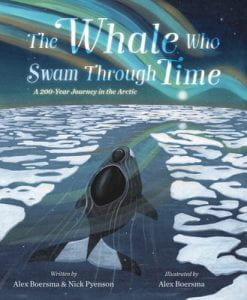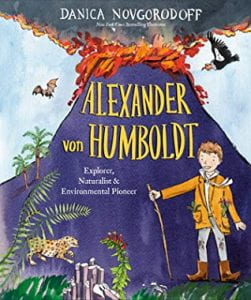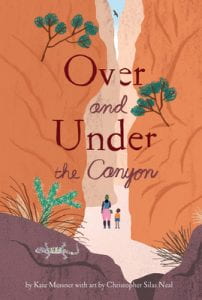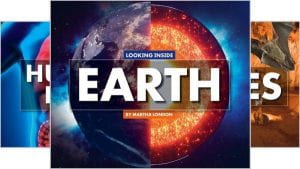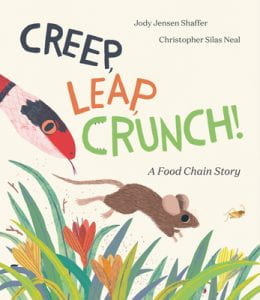 Shaffer, Jody Jensen. Creep, Leap, Crunch! A Food Chain Story. Illustrated by Christopher Silas Neal. Alfred A. Knopf, 2023. 978-0-593-56552-0. $18.99. Unpaged. Grades K-2.
Shaffer, Jody Jensen. Creep, Leap, Crunch! A Food Chain Story. Illustrated by Christopher Silas Neal. Alfred A. Knopf, 2023. 978-0-593-56552-0. $18.99. Unpaged. Grades K-2.
Creep, Leap, Crunch! introduces young readers to the concept of food chains. Told in cumulative rhyming verse, the story begins at the beginning of the day (“There was a blue sky with a bright shining sun / a glorious, life-giving, fiery sun. / The day had begun.”). The sun helps the grass grow, a cricket nibbles the grass, a mouse eats the cricket, a snake consumes the mouse, the snake is scooped up by a hawk, the hawk is caught by a fox, and the fox is eaten by a bear. (Note: None of the creatures preyed upon are eaten on page in the illustrations; the fatal attack occurs off page, making this an ideal option for sensitive readers). Readers also learn that not every day is the same. Some days the cricket might jump away from the mouse or the snake might slither away from the hawk, for example. The text is enhanced by Christopher Silas Neal’s colorful mixed media illustrations, which help to bring the animals to life on the page. Back matter includes a glossary that defines and discusses the parts of the food chain depicted in the story.
THOUGHTS: The repetitive cumulative rhyming format of this title makes this book an excellent read aloud option for science lessons relating to the food chain. Recommended.
577 Ecology

